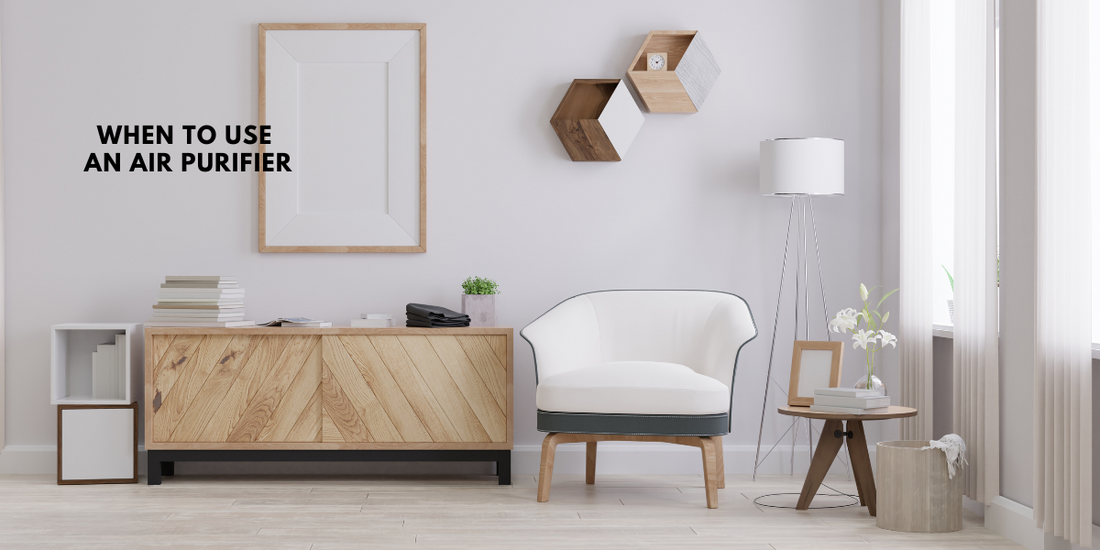Understanding Air Quality
The quality of the air we breathe indoors can have a significant impact on our health. Poor indoor air quality is known to caus e various health risks, ranging from mild symptoms like headaches and fatigue to more severe issues such as respiratory illnesses and allergies. It is essential to recognize the signs of poor air quality, which may include persistent coughing, sneezing, itchy eyes, and difficulty in breathing.Identifying Potential Pollutants
To effectively address indoor air quality concerns, it's vital to understand the potential sources of pollutants. Chemical pollutants, such as volatile organic compounds (VOCs) found in cleaning products, and biological contaminants like mold spores and dust mites can significantly affect air quality. Additionally, particulate matter, including fine dust, pollen, and pet dander, can contribute to respiratory problems.Factors Influencing Indoor Air Quality
Several factors can influence the quality of the air indoors. The location of your home and its surroundings, such as proximity to busy roads or industrial areas, can introduce external pollutants. Seasonal variations, like increased pollen during spring, can also impact air quality. Furthermore, occupant activities like cooking, smoking, and using certain products can release pollutants into the air.Benefits of Air Purifiers
Air purifiers offer numerous benefits when it comes to improving indoor air quality. They effectively remove airborne particles, such as dust and pollen, helping to reduce allergic reactions. Additionally, air purifiers equipped with activated carbon filters can eliminate smoke and odors, making the indoor environment more pleasant. By reducing airborne pathogens like bacteria, viruses, and mold spores, air purifiers contribute to better respiratory health.Determining When to Use an Air Purifier
While air purifiers can be beneficial in various situations, certain circumstances make their usage particularly important. High pollution levels, whether from outdoor sources or indoor activities like painting or cleaning, warrant the use of an air purifier. Individuals with allergies or asthma can benefit greatly from the continuous purification of air. Furthermore, vulnerable populations, such as infants, the elderly, or those with compromised immune systems, require cleaner air for their well-being. Additionally, if you find yourself in a smoky or odor-filled environment, an air purifier can help restore freshness to the air you breathe. Moreover, after recent renovations or construction work, air purifiers can aid in removing airborne particles and potential chemical residue. Finally, pet owners can benefit from air purifiers that effectively capture pet dander and reduce allergens associated with furry companions.Selecting the Right Air Purifier
Choosing the most suitable air purifier for your needs is essential to maximize its effectiveness. Various types of air purifiers are available on the market, each with its unique mechanisms and filtration systems. HEPA filters, known for their high efficiency in capturing microscopic particles, are a popular choice. Activated carbon filters effectively neutralize odors and volatile organic compounds. UV germicidal irradiation purifiers can kill airborne pathogens, while ionic purifiers utilize charged particles to capture pollutants. Ozone generators, though controversial, are occasionally used for specific applications. When selecting an air purifier, consider factors such as room size, noise levels, energy efficiency, and the maintenance requirements, including filter replacement.Placement and Operation of Air Purifiers
To ensure optimal performance, strategic placement of air purifiers is crucial. Place the unit in the area where you spend most of your time, such as the bedroom or living room. Keep the air purifier away from walls and furniture to allow proper air circulation. It is also important to follow the manufacturer's instructions for operation and maintenance. Regularly clean the filters and replace them as recommended. The duration of usage will depend on individual needs and the specific air quality concerns.
Complementary Strategies for Better Indoor Air Quality
While air purifiers can significantly contribute to improving indoor air quality, they work best when combined with other strategies. Ventilation and fresh air circulation are essential for maintaining a healthy environment. Open windows when possible or use exhaust fans to remove stagnant air. Regular cleaning and dusting help reduce the buildup of allergens and particles. Proper humidity management is also important, as high humidity can promote the growth of mold and mildew. Minimize chemical exposure by opting for natural cleaning products and avoiding the use of strong chemicals indoors. Finally, eliminate or minimize sources of pollutants by addressing issues like water leaks, moisture buildup, or inadequate ventilation.
Conclusion
In conclusion, using an air purifier can significantly enhance the quality of the air we breathe indoors, leading to better health and well-being. By effectively removing airborne particles, allergens, and pathogens, air purifiers create a cleaner and safer environment. Understanding when to use an air purifier is essential, considering factors such as pollution levels, individual health conditions, and specific environmental circumstances. When selecting an air purifier, consider the different types available and their respective features. Additionally, remember to properly place and operate the purifier for optimal performance. Lastly, incorporating complementary strategies, such as ventilation, regular cleaning, and managing humidity levels, further supports the goal of achieving excellent indoor air quality. By prioritizing the air we breathe, we can create a healthier and more comfortable living space for ourselves and our loved ones.

